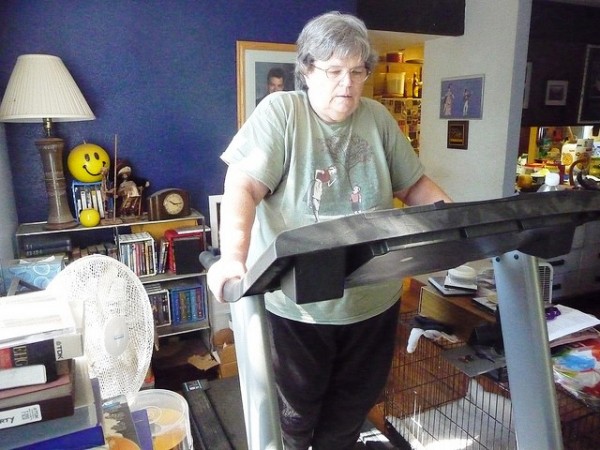Home-Based Exercises Can Benefit Patients with Blocked Arteries in the Legs: Study

Home-based walking exercise can improve blood circulation in people having blocked arteries in legs, according to a study.
Peripheral arterial disease (PAD) is a health condition categorized by restricted blood flow due to plaque buildup and narrowing of arteries in legs, head and other organs. People suffering from PAD are more likely to develop infections and gangrene that may even require amputation of limbs.
Researchers from the Northwestern University Feinberg School of Medicine in Chicago discovered benefits of home-based walking programs within six months in more than 81 participants with PAD. These subjects were motivated to take part in weekly meetings and trained to walk on treadmills at home. After first six months of training, the experts made phone calls to keep a tab of the patients' progress and walking skills.
Before the onset of the exercise program the participants' were measured on how fast they could walk from one end of a 100-feet hall to the other in six minutes.
It was observed that PAD patients could walk for a distance of 355.4 meters that increased to 381.9 meters within a year.
The trial involved another group of 78 healthy individuals who also took part in the training sessions and were surveyed on hypertension, cancer screening and immunization history. These participants walked for a distance of 345.6 meters compared to that 353.1 meters they were able to cover at the beginning of the experiment.
"I was somewhat surprised that we achieved our results of a continued difference between the intervention and control groups because it is very difficult to get patients to adhere to an exercise program long term even when it is supervised, and our program was unsupervised," Mary McDermott, study author toldReuters News.
These findings suggest home-based exercises are better than other exercise programs in inducing mobility in the legs. The current study advises PAD to rest for a few moments after walking continuously to avoid leg cramps that occur due to insufficient flow of oxygen. This can help them walk longer distances without feeling any pain.
"I ask my patients to set aside 40 minutes every day to walk. When they first start I tell them they might walk 15 minutes and rest 25 minutes. After six or 12 weeks, they might be walking for 25 minutes and resting for only 15, the effects (of walking) can be dramatic," Robert Patterson, a physician and clinical researcher at Brown University, told Reuters.
The authors urge people not to ignore leg pain or any form of weakness or discomfort and take walking difficulties lightly. They recommend people to consult doctors to seek early treatment and prevent the disease progression.
More information is available online in the journal the American Heart Association.
May 27, 2014 09:40 AM EDT





